#find solar water heaters
Explore tagged Tumblr posts
Text
Solar water heater for home cost
Solar water heater for home cost
The Solar water heater company ,Jupiter Solar , www.jupitersolars.in offers a best installation , they're one of the best solar water heater manufacturer in Bangalore,Karnataka,India.
They take the pressure off the job by making the installation all set up for you in your premises.
The water heaters are made right here in the Bangalore,India.
Their products are made to last and look great in your home.
Call them to set up a free no-obligation in-home appointment and to schedule a time to install your new solar water heater.
Their installation service is best to you, saving you money and time, and making sure you get the best water heater at the best price for you.
In the end, you’ll love the product they install and the company they work for!
You can also find a number of water heaters for sale in our Authorised distributors and dealers right here. They are perfect for someone who is on a budget and looking to save some money while still maintaining the best quality product at a fair price.
At www.jupitersolars.in, we know you care about your water heater and its water quality, so you can buy one from one of the leading manufacturers with confidence knowing you are getting the best product on the market.
We also offer great deals on water heaters .

Contact us today at 8618700466 , to find out how we can help you save on your next water heater!
Questions? We're Here to Help!
Call us at 8618700466 or send us an email [email protected] and we'll respond to you within 24 hours.
Looking for a solar water heater purchase? Call us at 8618700466 for complete details!
Schedule Appointment
You can set an appointment for any day and time that’s convenient for you!
solar water heater for home cost & saving
How to find a good solar water heater?
Solar water heaters are designed to heat water using the sun’s heat. They are considered as an alternative to electric or gas water heaters.
It is important that you must know that every homeowner should be able to save cost for some things in their daily lives. When you start thinking about saving on home and living expenses, then solar water heating is one of those important factors to add to the list.
Solar water heaters are also used in places where there is no electricity. This, in turn, helps save on the electricity bill.
How is solar water heating working?
This is a basic explanation of how a solar water heater works:
Heat comes from the sun’s rays and is transferred to the water in a tube or tank.
The warmth of the water inside is then circulated to a storage tank, which uses energy to maintain the water’s temperature.
The heated water can then be used to provide warm water.
Solar water heaters have been widely available in the market, especially when considering the advantages they have. The only limitation is the location in which they can be installed.
Cost and saving in the household
There are a number of water heaters that have solar panels on them.
Most of them use solar heat to maintain temperature and water in the tank. This means that it is not necessary for you to go for an electricity bill.
The savings can be around 30% to 40% of the normal electricity costs. This, in turn, leads to lower cost for you. You can install a solar water heater for home cost without worrying about electricity bills.
The following are the top benefits of choosing a solar water heater to install in the house:
A solar water heater can also be used to maintain indoor temperature, as the water in the tank will always be warm.
They are also a cost-effective choice as they do not need regular maintenance. The system can last for more than a decade with proper upkeep.
When it is sunny outside, the panels on the solar water heater will absorb the heat. When it is cold out, the water heater will remain cold.
When winter comes around, it can be heated manually by a few people.
It is safer to use a solar water heater in case of power outages and emergencies. There is no need for you to worry about getting low water levels or freezing pipes.
Can’t you just use a heat pump?
As it is mentioned above, a solar water heater does not rely on the electricity. If it is sunny outside, the sun’s heat can be absorbed and transferred to water to maintain the temperatures. This is done without the need of the heat pump.
This is one of the important benefits of installing a solar water heater. It is energy-saving and cost-effective.
How much should I spend on a solar water heater?
The solar water heaters that are available in the market come at different prices. When choosing a solar water heater, you should think of the following factors:
How much energy is needed to maintain the heat in the water?
The efficiency of the solar water heater will be reflected in the price. This is because the panel size and the type of material used in the heater will be different.
When it comes to buying a solar water heater, you should also make sure that it is suitable for your location.
You can check it using the solar water heater calculator or other available tools. This will make sure that you are able to install and maintain the water heater without problems.
What is the cost of solar water heaters?
The solar water heaters you will find in the market come at a price. However, their prices can vary, depending on the type of the panel that is being used in the system.
To make sure that you are buying a solar water heater that is suitable for your needs, you should not only consider its price, but also the maintenance cost.
What are the different types of solar water heaters?
Solar water heaters are available in many different sizes, and you can find them in different materials. This means that you can choose a solar water heater that is suitable for your needs.
When choosing a solar water heater, you should make sure that the model is suitable for you.
If you are planning to use the water heater for cooking or bathing purposes, you will need a larger panel. It is best if you buy a solar water heater for home because it will provide the right amount of heat for cooking and bathing.
#What are the different types of solar water heaters?#solar energy#solar water heater#solar water heaters#bangalore#karnataka#bengaluru#What is the cost of solar water heaters?#How much energy is needed to maintain the heat in the water#Can’t you just use a heat pump?#Cost and saving in the household#How is solar water heating working?#How to find a good solar water heater?#Solar water heater for home cost#Solar water heater for home
1 note
·
View note
Text
Artsakh has been blocked for 2 weeks 100+ days already, 120.000 people are deprived of their human rights, many of them are children. Tomorrow is Christmas, and on this very special holiday consider supporting indigenous christian nation by donating to good causes.
After 9 months of total blockade and after heavy shelling by the fascist dictatorship of Azer/baijan, the population of around 120.000 indigenous armenians had to flee Artsakh. Armenia is a small country, its population numbers at just a little below 3 million people - to accomodate more than 100k people, who left everything behind and need to find new places to live and work at, is a heavy task. Consider donating to the charities listed here.
URGENT:
Solar Haghorti - provide hot water to the Haghorti village in Artsakh
Sunrise in Artsakh - solar water heaters for Artsakh (please read the page, donation button is in the text, it's easy to miss)
Greenhouse Project - building greenhouses to overcome the challenges faced by Artsakh’s loss of land after the war as well as the blockade
Greenhouses and Beekeeping for Artsakhi Armenians - help Artsakh families to rebuild their lives in Armenia and create food secure and climate resilient communities
Supplies for Syunik and Beyond - fundraising for the Border Villages in Syunik
Legal Defense Fund for Jerusalem Armenians - help the Armenian Community of the Old City of Jerusalem as it stands in defense of its survival and security
OTHER:
Armenian food bank - food, clothing, medicine
VIVA foundation - doctors and medicine (25% of what I get from my winter commissions will go here)
Frontline Therapists - provides mental health services to Armenian veterans and others experiencing war related trauma
All for Armenia - support vulnerable populations, displaced families and border communities in Armenia
Kooyrigs - aid for those living in areas highly targeted by azer\\baijan
MIASEEN - stability for families in need
LGBTQ+:
Pink Armenia - serves community's needs, protects LGBTQ+ people's rights and pushes for the change of public policy around LGBTQ+ issues
GALAS - supportive network for LGBTQ+ people, promotes their personal empowerment within their communities and helps to build bridges between the LGBTQ+ and Armenian communities
Right Side - community-based rights defender non-governmental organization for the protection of transgender people and sex workers in Armenia
#please boost this!#armenia#artsakh#christmas#i will add to the queue the original donation posts tomorrow#but here's a short compilation. a holiday special.#(early) merry christmas to those celebrating! i won't be online tomorrow so wishing it now#donations
3K notes
·
View notes
Text
How to Choose the Right Water Heater for Your Home

Choosing the right water heater depends on your home’s needs. Consider the following:
Types: Tank: Stores water and is ideal for large families. Tankless: Heats water on demand, saving space and energy. Solar/Heat Pump: Energy-efficient but higher upfront cost.
Size: Smaller homes (1-3 people): 20-40 gallon tanks. Medium homes (3-5 people): 50-60 gallons. Larger homes (5+ people): 75+ gallons or tankless systems.
Energy Efficiency: Look for ENERGY STAR® ratings to save on utility bills.
At Value Water Heaters, we can help you find the best option for your home. Contact us today for expert advice!
Call us on: (877) 957-9130
Visit us on: https://valuewaterheaters.com/
30 notes
·
View notes
Text
Yes, we can stop climate change - and solve ecological problems in general
In the last few years, I have seen again and again a particular social response to climate change that can leave human civilization just as devastated as denying or ignoring climate change: and that is doomism, and fellow-traveler ideas of eco-fascism and eco-austerity. Make no mistake: climate change is a very serious issue that can cause noticeable damage to Earth and a hell of a lot of damage to humanity, but people absolutely love to take it to lurid extremes, like "Mad Max hellworld" and "Earth becoming the second Venus by 2100". In this post, I'm just going to lay out numerous reasons why the situation is far from hopeless, why sensationalized narratives of climate change are just a petty excuse for inaction, why "we'd better start taking mud baths to get used to being in the ground" rhetoric is incredibly dangerous (not to mention a betrayal of the weak and vulnerable by the strong and well-off), and why, ultimately, things aren't as dire as "the common wisdom" proclaims - so that people can stop feeling crushed by hopelessness, and start solving all of the very, very real environmental problems the way they're already being solved. All my examples will be sourced from the IPCC reports and real-world accomplishments in eco-restoration, via an extremely helpful blog called Doomsday Debunked, which just reprints all the IPCC and IPBES findings that doomist media and activism deliberately omits.
Most of this post is adapted from one I already made before elsewhere - but perhaps on Tumblr it's going to become more popular and widespread. I'm going to split it into three different sections: climate change mitigation, biodiversity recovery, and why "green austerity" is not a brilliant idea, will not save anything, and is ultimately an outdated falsehood that emerged from a place of insufficient knowledge and understanding. Almost all paragraphs contain links to sources/more info, but they may be hard to see in some custom Tumblr themes - be sure to mouse over if you want to find the links.
CLIMATE CHANGE MITIGATION AND YOU: how renewable energy really can save the world!
Here's the biggest thing first: Climate Action Tracker, which is a pretty damn respectable source, has slashed off 1.1 to 1.5 degrees Celsius off its average warming projections since 2010, according to their own records. Hell, in 2018, three degrees of warming was a pledge, and four degrees was the expected upper limit; now three degrees is expected if the current level of fossil fuel consumption continues without any reduction - and two degrees is the policy target, while optimistic projections are inching closer to 1.5 degrees. And to "achieve" 5 degrees Celsius of warming, which is misleadingly described by journalists as "business as usual" when by our current day it's anything but, we would need an economic mobilization from now to 2100 to burn all the coal that we can possibly burn. With coal plants shutting down in reality simply due to being unprofitable, I don't have to tell you how "realistic" and "plausible" that is. The takeaway from this is simple: the Paris Agreement and environmental activism work, and I really don't see them winding down unless we let doomism reign supreme.
A specific example of policy and technology that can seriously reduce climate change is the amazing growth of solar power over the last 10 years. I am old enough to remember the early 2000s, when solar photovoltaics (the panels that convert sunlight directly into electricity) were an unproven, esoteric, and expensive technology, and people meant solar water heaters when they said "solar power"… but nowadays? There is literally predictions that if solar energy keeps growing at current rates, and considering it already beats fossil fuels on price, it might simply price out gas, coal, and oil before 2050, rendering them entirely obsolete. Even now, investment into coal or gas power plants is seen as an incredibly stupid thing to do, because they might become "stranded assets" - too expensive to run, and unable to even recoup their initial cost.
The clathrate gun/Arctic methane bomb hypothesis has been effectively disproven at the current time. The release of methane from clathrates is endothermic, meaning it takes in more heating than it releases; a direct opposite of a gunshot/explosion, which is an exothermic reaction. More modern research also turned up the fact that methane has been seeping upwards at a constant rate for millennia now - we just didn't monitor it. Seabed disturbance could possibly upturn some of the clathrates, but ocean warming alone simply can't do it - it would take thousands of years of warming for the temperature change to propagate to the kind of depth that methane clathrates are found at.
The hypothesis of runaway greenhouse effect has effectively been disproven too: with a more powerful greenhouse effect, Earth's albedo grows just as fast as the heat-trapping capacity, meaning runaway warming is highly unlikely and the only cause are human industry CO2 emissions, which can be obsoleted by renewables and thus stopped.
The biggest threat from climate change as it is now appear to be extreme weather events; for example physically straining heatwaves, or severe floods from large amounts of rainfall. And those are serious problems. But heatwaves can be deal with by adapting our environments - the most obvious example being to plant some trees instead of layering our cities in concrete. Similarly, flood management isn't some arcane art; we know how to do it. It's just been ignored due to complacency and budgetary stinginess.
The expectations of social collapse from climate change are… overstated, let's say. The IPCC's own worst-case scenario is NOT "Earth as a lifeless desert" or "collapse of human society"; the situation IPCC associated with three-degree warming is that hundreds of millions risk being displaced by sea level rise and temperatures in the tropics getting too hot for comfortable life with no weather difficulties (NOT THE SAME as "you go out at any point during the summer, you die in ten minutes"), and the UN Sustainable Development Goals will be left in ruins. In other words, the poor people of the world will go back to starving and suffering, and the rich, especially in the West, will for the most part retain their quality of life. And so to me, as a non-Western, not-ultra-rich person, doomism is a personal affront, and doomism from solarpunks and environmentalists is a grave betrayal.
Speaking of the IPCC reports: the last one states with decent confidence that as soon as we stop pumping CO2 into the atmosphere, temperatures will begin to drop. Just think on this for a minute.
The "1970s MIT supercomputer that predicted the collapse of civilization by 2040"? That computer was not just less powerful than a smartphone from five years ago - it modeled the world as a single pixel, primitive even by the standards of the day. (Link to article that features actual model comparisons, via browser-based Javascript emulation. 'Nuff said.)
The so-called "deep adaptation" paper that managed to put people into therapy by its sheer grimness? Junk science that was rebuffed by Michael Mann - the author of the "hockey stick graph" of global temperatures, so not a climate denier by any means - in a four-letter tweet.
Earth turning into a second Venus by 2100? Yeah. That's… not gonna happen. We literally don't have enough fossil fuels to induce a greenhouse effect this bad, at any timescale, and I don't know if we could do it even if we started importing dry ice from space and cracking carbonate minerals for their carbon content to deliberately destroy the planet for some stupid reason.
And just because I feel like mentioning it: no, Earth can't run out of oxygen for us to breathe, barring an invasion of Galactus or some other planet-devouring alien.
BIODIVERSITY + CONSERVATION: lies, damned lies, and statistics
The infamous notion that we are heading for a world without insects was based on a study where half the map was blank, and some countries only counted the domestic honeybee (which relies on humans to thrive). Not all plants need insects to pollinate them, either. But at the same time, overuse of insecticides in agriculture is a serious issue with many adverse effects, and it has to be fought against. There is currently a campaign in Europe with this aim. Native grass lawns in cities help a lot too, more than you would think at first.
Similarly, there is a general notion that we are "in the middle of a sixth mass extinction", except we're not "in the middle". We're in the beginning of one. Now, if we all start/keep behaving like the Glukkons from the Oddworld series of games, or the Blargs from the first Ratchet & Clank game, for a few hundred more years - then we're totally going to face an impoverished biosphere with half or more known species dead. But if we do that, I'd say extinction of species would be far from our only problem.
The number one agricultural land use that drives deforestation is grazing cattle and growing crops to feed them; cropland and cities simply don't compare. Ergo, just by shifting to plant-based diets supplemented by lab-grown meat cultures and sustainable fish, we can rewild nearly 30% of Earth. And climate impacts there can be reduced too, if you simply buy local.
For a reforestation success story on a massive scale, look no further than the Loess Plateau.
Conservation success stories are actually plentiful; however, they do not get aired on the news because good news does not draw in views, clicks, and outrage. You can just go through this article on Doomsday Debunked to see how successful nature conservation can actually be.
The only two biomes that are most endangered by climate change are coral reefs (which would be replaced by the more resilient sponge reefs at 3 degrees of warming or around that), and the mountain glaciers, which will take thousands of years to recover, unlike the polar ice caps that'll be back in a couple of decades. But even corals have shown more resilience than expected before, so the scale of devastation is not nearly as huge as people might imagine.
GREEN AUSTERITY: "Friendly fire! Stop shooting, you pointy-eared leaf lover!"
A common, in fact extremely common, idea is that the only way to save the planet is accepting massive reductions to our quality of life - and by "massive" I mean "living in dugouts and doing subsistence agriculture while literally billions of people die for lack of warmth and medicine". Not only is this unacceptable, it's also a complete lie. The best way for someone living in the car-dependent, fossil-fuel-hungry sprawl of North America to reduce their carbon footprint is actually moving to a country with walkable, bikeable cities and good public transportation, like the Netherlands… or preferably, reforming and rebuilding their own local environment to this standard that used to exist in NA before its suburbanization that included zero public transport due to auto industry lobbying. NotJustBikes is an entire YouTube channel that explains this better than I ever could.
Another common idea is that building enough renewable generation capacity is just not possible with existing resources here on Earth. But consider this for a moment: when we mine metals and make them into electric engines or batteries, they don't go anywhere, with the only possible exception being metal flaking off due to corrosion. The metals composing wind turbine generators, electric vehicle motors, and batteries, or silicon composing the solar panels, remain in place and can be recycled several times, if not infinitely. Oil and coal that our current civilization burns for fuel EMPHATICALLY CANNOT be recycled - the entire problem we have is that they turn into carbon dioxide and clog our atmosphere, while soot and other exhaust fumes damage the health of people living in cities. Getting rid of 99% or more of fossil fuel infrastructure doesn't seem like that hard of a choice when you remember that feeding a renewables-based infrastructure requires a far more modest production capacity.
The issue of soil depletion from intensive agriculture is not only exaggerated by the negative/doomist framing (no, we are NOT going to run out of topsoil in 60 years!) - it's also a problem of mismanagement rather than an inherent agricultural problem. Stop oversaturating fields with fertilizer, introduce polyculture and crop rotation, and you'll see how much better things can get.
Similar to the above: the production of fertilizer does not require fossil fuels, no matter what some people might be saying. The three types of fertilizer are nitrogen, phosphate, and potassium. All of those are abundant chemical elements on Earth, and circulate through the biosphere freely; nitrogen is the 70% of our atmosphere and cannot possibly run out, and phosphate with potassium are abundant in the Earth's crust. The only direct use of fossil fuels in fertilizer production is the Haber-Bosch process that condenses nitrogen from the air into ammonia, and guess what molecule it needs for that? Hydrogen, which is the stronger half of the elements composing hydrocarbon fuels and which we could have in abundance by simple electrolysis of water!
Related to the above: it is beyond ridiculous how cow manure is dumped into rivers or similar by most modern farmers, when with right subsidies it could be transformed into cheap-as-free fertilizer to be used in agriculture. Someone should go create subsidies for large-scale composting...
Surprisingly enough, even consistent economic growth - which I am not a fan of by any means - can be achieved on a finite planet, because economic growth is all in what you count and how you count it. If we calculate economic growth not by production, but by improvements in human condition and condition of ecosystems (i.e. an economy that grows with the growth of trees), then we'll see that right now some world regions (like, again, North America) are failing as much as countries poor in money, but also that there is an enormous space for growth measured in sustainable prosperity.
The much-touted problem of water wars is an actual problem only for regions way, way inland. Any coastal countries have access to efficient desalination; it's not 1850 anymore. Water doesn't disappear from the world after people use it in cities and industries, it goes right back into the soil/atmosphere/rivers and oceans, so we can't "run out of water".
Interesting fact: we don't actually require any particularly specialized carbon capture technology to remove all the excess CO2 from the atmosphere, and will not require us to divert society's resources to expensive machinery. The old adage about the best carbon capture technology that's called "planting trees" still holds - and what's even more interesting is that there actually are even better methods that are not much more complex… and produce other things for the environment and for civilization in the process.
CONCLUSION
To sum things up: yes, the situation is serious, and "already bad enough" as Michael Mann put it (admittedly, he's been leaning into negative framing himself… but it can't be all positive, the problems of climate change really are dangerous, especially to the world's poor), and there's been a lot of environmental damage due to industries and rich consumers deliberately ignoring the externalities/knock-on effects of their resource use - but it's not nearly as horrifically bleak as some people presume. Right now there is great momentum behind climate action - which, yes, is partially propelled by increasingly hostile weather, but also by an understanding that social progress, democracy, and collective action are vital to build any form of a decent society, as well as by seeing new opportunities rise from cheaper renewable energy, better cities, and other innovations that will both stop climate change and make life actually worth living no matter where you might be. And in these conditions, throwing in the towel or surrendering to eco-austerity or even eco-fascist thinking is the worst possible action any one person can take. The green, sustainable, egalitarian future is not merely a dream or flight of fancy - it's eminently attainable if only we keep pushing for it and help eachother achieve it. But of course, there are people who stay up nights thinking how to take that future away from us, and now that climate change denial is no longer tenable, with more and more people believing their own eyes, the doomism and inactivism have become their primary, perhaps only, means of holding onto their power…
I hope this post will be helpful to people here who find themselves in the grip of doomism and hopelessness. I expect some people to disagree, but I prefer to believe the sources like the IPCC, IPBES, Climate Action Tracker, and all the climatologists behind these organizations' reporting - who've been closely watching both the worsening extreme weather from climate change, and the emergence of all the simple, usable, life-improving technologies and social practices to combat it. If we don't believe these people, then really, who can we believe? And if you do trust their reports on all the positive things being done and planned for environmental needs, it is not simply an idea that we can deal with climate change and restore, then protect our environment - it's objective reality, it's respectable science, and thus, it's good hard common sense.
More information: Doomsday Debunked (layman explanations and positive framing, also covering a ton of other "not actually the end of the world" topics for scared people), Carbon Brief (more technical and a bit less brazenly optimistic, but showing things like the absolutely crazy speed of renewable energy development), Not Just Bikes (an urbanist YouTube channel showing how cities can be improved, not made poorer, in the process of reducing fossil fuel use and car dependency).
#climate change#global warming#solarpunk#bright green environmentalism#hope#reasons for hope#psa#problem solving#debunking doomsday#long post
121 notes
·
View notes
Note
Palmer Station AU Lilith always in short sleeves (Ava: you know you’re in Antarctica, right? Where the pencilguins are?) and everyone is a little concerned because she’s always underdressed and usually damp and never seems to notice it’s cold (Ava: it’s cold enough to freeze your tits off! Why is she in shorts? We know she’s tall, she doesn’t need to draw further attention to it.
Camila: She’s a horseshoe crab, that’s for sure.
Ava: … explain.
Beatrice: Survived 4 major extinction events but appears to be threatened. Apt.
Camila: Thanks. I would rather she just wore a jacket).
lilith who once spent hours every day swimming without a wetsuit in the atlantic, leaving her hoodie on a tree branch and her backpack with her gameboy and her snack bars wrapped in a tarp and rigged up on a length of repurposed bungee cord, because she read about big cats who pull their prey up into trees.
the first shock of water in the low celsius and how it made her feel so awake, so alive. and she’s addicted to that feeling, just a little, the body startled into bright awareness.
so at palmer while cam’s always going on about the insulative properties of wool, where even beatrice keeps quilts and her solar space heater and a good sturdy jacket up in her observatory, lilith is walking around in tank tops, hair wet on her shoulders, hands always chilly to touch so when cam tries to show her scales on the keyboard she ends up turned sideways on the upside-down bucket they use as a piano bench, cradling lilith’s hands in her hands and warming them with her breath.
faint notes of matcha and anise from her mouth and lilith wondering how she’d taste.
cam murmuring, ‘you’re freezing. doesn’t it hurt?’ and lilith shrugs.
she can’t look at cam while she speaks. afraid she’ll lose the words, or decide to do something else with her mouth. she’s not good at talking, learned ASL and ESL to let her speak with other divers underwater. in water, sound behaves differently.
‘most fish are cold-blooded. it allows them to live in broader temperature ranges. a useful adaptation for an environment that is traversable vertically and horizontally.’
cam humming, playing with her fingers now, finding the calluses, skin-texture shaped by years of performing certain, repetitive actions. lilith has a few from holding cutlery too tightly.
dark curls shifting as cam looks up. ‘you study that, right? adaptations.’
sign language underwater. backpacks in trees and a body growing fond of the cold. old manor houses with poor central heating and lilith curled up next to the fire downstairs while her mother is at dinner parties. waking up with a blanket over her, and for years convincing herself it was her father’s ghost. because she could not imagine her mother, tipsy in high-heels, smelling of cigarillo smoke, having the delicacy to cover up the small shape half-lit by the dying fire.
maybe she just didn't want to see it.
‘yes, among other things.’ lilith watches her fingers fold, unfold, as cam manipulates them. ‘some fish, like bluefin tuna, are warm-blooded. this allows them to swim on average around 1.6 times faster than other fish. an advantage, but it also makes them more vulnerable to the effects of climate change. temperature and habitat disruption.’
‘is that why you won’t wear a coat? are you afraid of adapting?’
cam’s eyes are shrewd, searching.
biting her lip, hands almost pulling out from the campfire of cam’s hands. ‘i- no i just… want to belong here. don’t like hiding from it, don’t like all the tight layers and the itchy heat. i like the water to decide how i feel.’
(so you don’t have to.)
camila is not so unkind as to say it, but her dark eyes are bathypelagic. deep, but home to things lilith loves.
‘i like to be free,’ she finishes. a bit lamely, in her mind, but cam only looks intrigued.
she curls lilith’s hands into two tight fists and returns them to her. they end up on her lap, peeling back apart like a pair of dead crabs.
‘but… sometimes adaptations are good, right?’
lilith shrugs, ‘yes, and sometimes they’re a cancer. evolution is a one-sided story. it’s not an artist’s sketch, or god. it’s chaos - just an account of a bunch of creatures who got lucky.’
she expects this to provoke a flinch, a wash of cold water, but camila only giggles, taps a few keys. the start of a tune lilith half-recognizes. familiar in the way a mouth can be even after a long time, with eyes closed.
‘you’re right.’ cam's eyes glitter. things live in the deep ocean where it’s dark. lilith knows this, but cam’s eyes make her believe it. ‘people can get used to the cold.’
her cold hands in cam’s warmth
‘but it’s okay to be warm sometimes?’ cam's voice hitches up at the end, so maybe it's a question. maybe she should answer.
lilith wonders if cam knows how to sign. she should teach her. it’s so useful for diving, for when a girl takes all the air out of the room.
cam turns bright, then. pelagic. ‘also, you don’t want to end up getting sick around me. i’ll make you so much tea you’ll start to hate me.’
impossible, lilith thinks. but all she does is nod, and look away.
#palmer station au#and then the obligatory sickfic ghdkslds#camilith#anon#i am giving you a good grade in sending me asks#casper writes
82 notes
·
View notes
Text
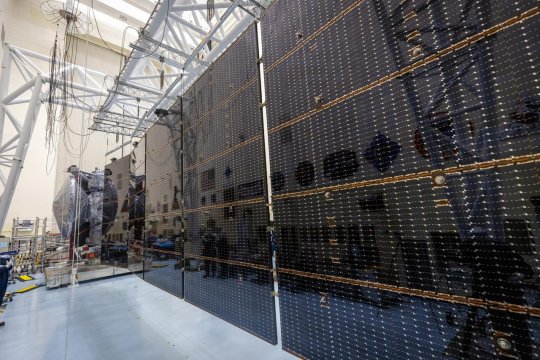


NASA’s Europa Clipper Gets Set of Super-Size Solar Arrays
The largest spacecraft NASA has ever built for planetary exploration just got its ‘wings’ — massive solar arrays to power it on the journey to Jupiter’s icy moon Europa.
NASA’s Europa Clipper spacecraft recently got outfitted with a set of enormous solar arrays at the agency’s Kennedy Space Center in Florida. Each measuring about 46½ feet (14.2 meters) long and about 13½ feet (4.1 meters) high, the arrays are the biggest NASA has ever developed for a planetary mission. They have to be large so they can soak up as much sunlight as possible during the spacecraft’s investigation of Jupiter’s moon Europa, which is five times farther from the Sun than Earth is.
The arrays have been folded up and secured against the spacecraft’s main body for launch, but when they’re deployed in space, Europa Clipper will span more than 100 feet (30.5 meters) — a few feet longer than a professional basketball court. The “wings,” as the engineers call them, are so big that they could only be opened one at a time in the clean room of Kennedy’s Payload Hazardous Servicing Facility, where teams are readying the spacecraft for its launch period, which opens Oct. 10.
Flying in Deep Space
Meanwhile, engineers continue to assess tests conducted on the radiation hardiness of transistors on the spacecraft. Longevity is key, because the spacecraft will journey more than five years to arrive at the Jupiter system in 2030. As it orbits the gas giant, the probe will fly by Europa multiple times, using a suite of science instruments to find out whether the ocean underneath its ice shell has conditions that could support life.
Powering those flybys in a region of the solar system that receives only 3% to 4% of the sunlight Earth gets, each solar array is composed of five panels. Designed and built at the Johns Hopkins Applied Physics Laboratory (APL) in Laurel, Maryland, and Airbus in Leiden, Netherlands, they are much more sensitive than the type of solar arrays used on homes, and the highly efficient spacecraft will make the most of the power they generate.
At Jupiter, Europa Clipper’s arrays will together provide roughly 700 watts of electricity, about what a small microwave oven or a coffee maker needs to operate. On the spacecraft, batteries will store the power to run all of the electronics, a full payload of science instruments, communications equipment, the computer, and an entire propulsion system that includes 24 engines.
While doing all of that, the arrays must operate in extreme cold. The hardware’s temperature will plunge to minus 400 degrees Fahrenheit (minus 240 degrees Celsius) when in Jupiter’s shadow. To ensure that the panels can operate in those extremes, engineers tested them in a specialized cryogenic chamber at Liège Space Center in Belgium.
“The spacecraft is cozy. It has heaters and an active thermal loop, which keep it in a much more normal temperature range,” said APL’s Taejoo Lee, the solar array product delivery manager. “But the solar arrays are exposed to the vacuum of space without any heaters. They’re completely passive, so whatever the environment is, those are the temperatures they get.”
About 90 minutes after launch, the arrays will unfurl from their folded position over the course of about 40 minutes. About two weeks later, six antennas affixed to the arrays will also deploy to their full size. The antennas belong to the radar instrument, which will search for water within and beneath the moon’s thick ice shell, and they are enormous, unfolding to a length of 57.7 feet (17.6 meters), perpendicular to the arrays.
“At the beginning of the project, we really thought it would be nearly impossible to develop a solar array strong enough to hold these gigantic antennas,” Lee said. “It was difficult, but the team brought a lot of creativity to the challenge, and we figured it out.”
More About the Mission
Europa Clipper’s three main science objectives are to determine the thickness of the moon’s icy shell and its interactions with the ocean below, to investigate its composition, and to characterize its geology. The mission’s detailed exploration of Europa will help scientists better understand the astrobiological potential for habitable worlds beyond our planet.
Managed by Caltech in Pasadena, California, NASA’s Jet Propulsion Laboratory leads the development of the Europa Clipper mission in partnership with APL for NASA’s Science Mission Directorate in Washington. APL designed the main spacecraft body in collaboration with JPL and NASA’s Goddard Space Flight Center in Greenbelt, Maryland, NASA’s Marshall Space Flight Center in Huntsville, Alabama, and Langley Research Center in Hampton, Virginia. The Planetary Missions Program Office at Marshall executes program management of the Europa Clipper mission.
NASA’s Launch Services Program, based at Kennedy, manages the launch service for the Europa Clipper spacecraft, which will launch on a SpaceX Falcon Heavy rocket from Launch Complex 39A at Kennedy.
TOP IMAGE: NASA’s Europa Clipper is seen here on Aug. 21 at the agency’s Kennedy Space Center in Florida. Engineers and technicians deployed and tested the giant solar arrays to be sure they will operate in flight. Credit: NASA/Frank Michaux
CENTRE IMAGE: NASA’s Europa Clipper is seen here on Aug. 21 in a clean room at Kennedy Space Center after engineers and technicians tested and stowed the spacecraft’s giant solar arrays. Credit: NASA/Frank Michaux
LOWER IMAGE: This artist’s concept depicts NASA’s Europa Clipper spacecraft in orbit around Jupiter. The mission’s launch period opens Oct. 10. Credit: NASA/JPL-Caltech
4 notes
·
View notes
Text
Fri, June 14
Aaron and Jay were on for fulfilling Marissa’s wish ~ a post graduation crab boil with a gluten free dessert. Done and done!! Everyone was thrilled with the results.




Marissa gave us a stand up post meal presentation of her work. Native tribes struggle mightily with the lack, expense and disruption of power. She has single handily made contacts, built relationships, developed a turnkey method for preparing for grants and implemented key research to gain inroads into the installation of solar micro grids. Marissa’s one smart, wise, humble, honest and kind cookie. The same goes for Haley. Really blown away by her charm, smarts and inner glow. May they each find happiness always. 💓💓
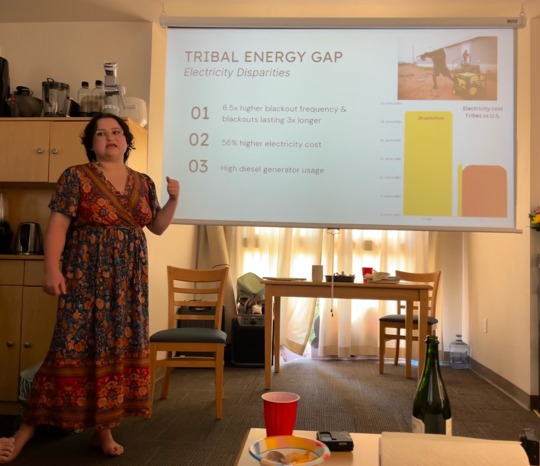
We begged off breakfast in the morning with the idea of getting a jump on traffic to San Diego. In the meantime, we felt the need for some Kate and Aaron time on the water. And a drink. Scored a table at Oku on a second floor patio with a gas heater and setting sun!
There’s a lot to process about San Diego. What’s important now though is that the event was a raging success. And we know we’re going to have some wonderful young people visit us in Maine. There may be a trip to Nepal in our future too!?!
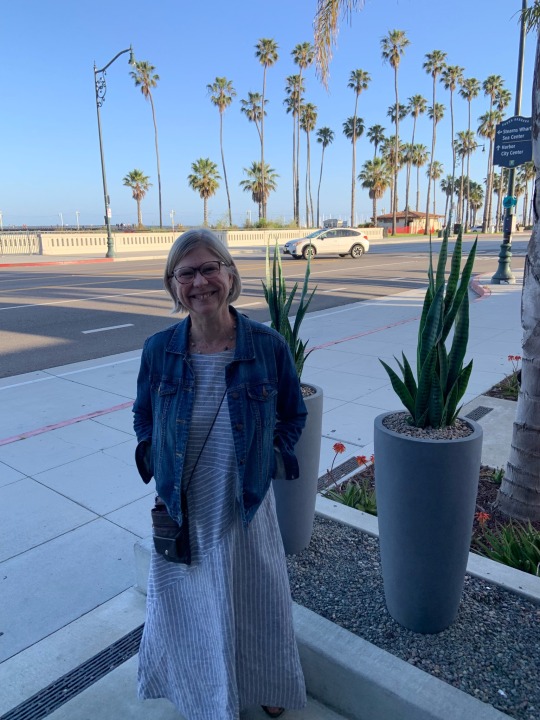
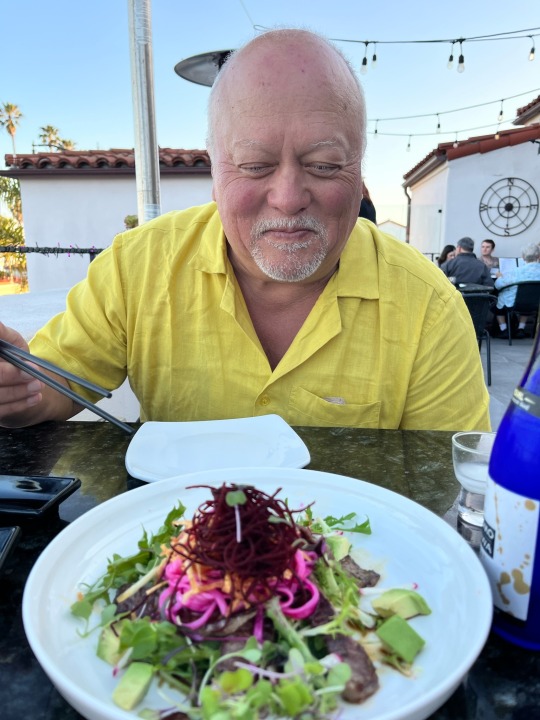


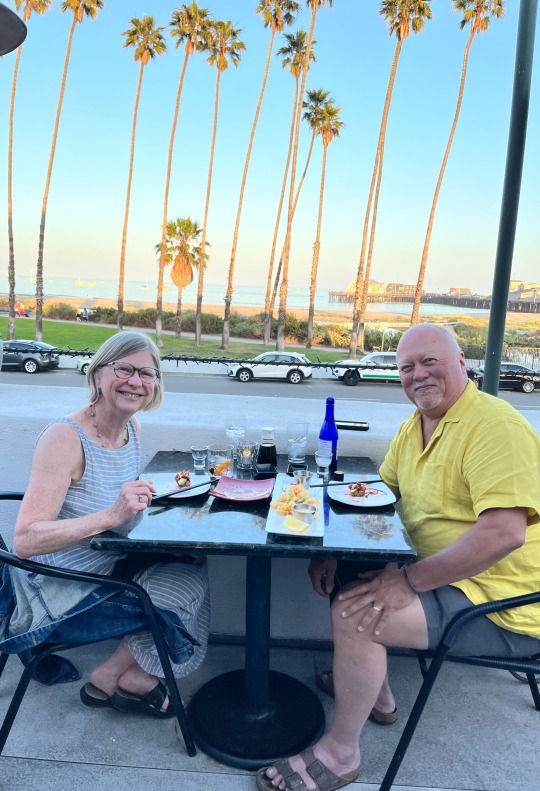
3 notes
·
View notes
Note
You say you had to level up to evolve into a woman? What about trans women like me? What are our prerequisites ?
You just need an additional rock, what kind of rock? Depends on what kind of woman you wanna evolve into:
Leaf stone, you become a plant lady, I don't make the rules of nature. Though, you also might become a vegan. It's a 3.57% chance, so be careful with that rock if you like meat.
Water stone makes ya thirsty woman, make sure you have a water bottle by your bed or you'll wake up like Spongebob without his helmet in Sandy's dome. Will look good with wet hair now though.
Fire stone, you are the rare type of woman that runs hot, people will use you as space heater. If you don't like being touched, too bad, you are the heating pad now. Also might be spicy, what kind of spicy? That is something we all must find within ourselves.
Thunder Stone, thunder thighs. Tis a blessing and a curse, depends on the woman you ask, take that as you will.
Ice stone or touching the ice cube, 99.9% of women are always cold. It's a fact that we are heat leeches, it's in all the biology books, trust me. If you use this stone, you will gain the perk of cold feet, good weapon against your partner, but they may get sick of your cold feet shit and force you to wear socks to bed, which is a sin towards all. Weigh the pros and cons.
Dusk Stone, you will be active only at night, great for clubbing or gaming sessions depending on what kind of woman you are. May develop the move "insomnia", which takes several steps to replace with another move, bad for competitive play, but your nights will be legendary.
Dawn stone, you morning woman you. You get so much done in the day, but you will crash once the sun descends beyond the horizon, like those solar panel lights that only shine for like 3 seconds because you put them in a weird spot in your lawn, and you become a tired husk that must bath in lavender scented epsom salts, but that's treating yourself bby.
Love and friendship gives you the perk of self-love, which is rare in all womenkind. We pretend to have it, you know, 'fake it til you make it', and you will fall into this circle of love and hate at times, but the highs will be highs bby gurl.

#text post#long post#this is a goofy post pls dont take it seriously //WHEEZE#I didn't know how to respond //WHEEzE
25 notes
·
View notes
Text
Excerpt from this story from the New York Times:
In February, the United States did something that it had not done in many years — the country sent more electricity to Canada than it received from its northern neighbor. Then, in March, U.S. electricity exports to Canada climbed even more, reaching their highest level since at least 2010.
The increasing flow of power north is part of a worrying trend for North America: Demand for energy is growing robustly everywhere, but the supply of power — in Canada’s case from giant hydroelectric dams — and the ability to get the energy to where it’s needed are increasingly under strain.
Many energy experts say Canadian hydroelectric plants, which have had to reduce electricity production because of a recent drop in rain and snow, will eventually bounce back. But some industry executives are worried that climate change, which has already been linked to the explosive wildfires in Canada last year, could make it harder to predict when rain and snowfall will return to normal.
“We’ve all got to be humble in the face of more extreme weather,” said Chris O’Riley, president and chief executive of the British Columbia Hydro and Power Authority, which operates hydroelectric dams in western Canada. “We manage from year to year the ups and downs of water, and when we have the downs like we’re having, the lower levels, it’s common for us to import power, and we expect to continue that this year.”
The United States and Canada have long relied on each other because power use tends to peak north of the border during the winter when Canadians use electric heaters, and American electricity use peaks in the summer during air-conditioning season.
The abundance of Canada’s hydroelectric power has been a cornerstone of the trade, providing relatively low-cost renewable energy to California, Oregon, Washington State, New York State and New England.
But the supply-and-demand equation for energy is changing. Demand for electricity in many states has been climbing sharply in summer and winter. Some experts predict that winter electricity demand in the United States could eclipse summer demand by 2050.
At the same time, utilities are increasingly reliant on intermittent resources like solar and wind power. Large hydroelectric plants, once considered a stable source of electricity, have struggled with low reservoirs in California, around Hoover Dam and recently in Canada.
“We are facing real changes in the weather, and we’re finding out in real time how that’s going to affect hydroelectric operations, pretty much across North America,” said Robert McCullough of McCullough Research, a firm based in Portland, Ore., who has been a consultant for corporate customers of Canadian utilities since the 1980s.
2 notes
·
View notes
Text
45 Candles
I have just completed my 45th solar revolution.
It was a rough year. It was a troubling year. It was a challenging year. But by the time It ended, I began to rebuild myself.
I had been in a funk and hated a lot about myself for way too long. I hated that I wasn’t in a place I needed to be professionally. I hated that I was still stuck in a position that I couldn’t get out of. I hated that I couldn’t convince the love of my life to come live with me down here so we could start a life and a family together, and when she died… I hated myself for fighting harder to make that happen.
I felt like my life had come to an end. I felt like I had nothing to live for. I felt like I didn’t need to stay around. And with signs telling not to look forward to things I wanted to see and do anymore, and the country you live in continues to embrace hatred over love, greed over grace, and pain over peace, I was in a dark, dark place.
So much bad luck. Water heater leaks. Losing ¼ of my clothing and a whole lot of irreplaceable items like books, comics, photos, and other things to water damage. Months later, I lost my computer, my tether to the outside world.
I felt like I was cursed.
I felt like staying in my bed because there was nothing worth getting up for. And even in that frustration on my lowest day, I started to be more reflective about some things.
I have my health. My right eye is blurry, but at least I could see color and basic shapes (but not details), but I’m still healthy for the most part. I still have a family that still loves the hell out of me. I still have a hole in the wall where I can rest my head. I have friends. Most of them are online, but I am ever-so-grateful to have them in my life.
The more I thought about the good things in life and not focusing so much on the bad stuff, the more I realized I’m actually okay. I wasn’t cursed. I wasn’t damned. I was okay. Life was fine. Not perfect, but fine.
I felt like I needed to start over and find focus in things I left behind a long time ago.
I started to write again.
I started to draw again.
I started to be more creative again.
I looked back at the things I’ve done decades ago and wondered where that guy was. Whatever happened to that guy who just loved what he was doing and created folders full of sketches and stories? I know I can’t go back to what I used to be, but I’m rediscovering that side of me I felt was long buried, and you know what?
I’m actually enjoying this trip now. It’s been way too long since I felt so… happy and unafraid? That’s what that feeling is. I missed it. So, today, January 21, I've turned 45, and I’m looking forward to seeing where this next solar revolution will take me.
14 notes
·
View notes
Text
Water Heater Repair Frisco
Water Heater Repair Frisco TX
When gas water heater Repair Frisco TX answers a customer’s call, the first thing they make sure to find out is how the client heard about us. We are not surprised to find that in a majority of the calls we get it is because someone was referred by a customer that we helped in the past and who was very pleased because of the services we offered him or her. You too will be thrilled with Water Heater Repair Frisco TX work and the way we operate because in our business the customer is King.
Toilet repairing services that will make you happy It is not by accident that most of our business is a result of word of mouth referrals; this is how we planned it hence the reason we work so hard to get all our customers excited about our services. In business, it is said that it is easier to keep the client you have than it is to get a new one; that is certainly why we go out of our way to exhaust all avenues so that our services are rated number one.
For example, if you are thinking of repairing a gas heating unit, we might advise you instead to think about a tankless water heater if we notice the old appliance is wasting your money.
We can repair or replace your toilets Everything we do, we ask ourselves what is the best for the customer and what services will give them better opportunities to save money since life is expensive especially for families raising small children or for retired people whose income is lower than before and in most cases fixed. Do you desire an electric water heater because your water heater leaking issues, there is no problem. We will fix it for you. We can also install solar water heater.
our services:-
Tankless Water Heaters electric water heater Water Heater Installation Installing new Water Heater gas water heater Repair Water Heater Repair Any water Heater Installiion water leak Repair
About Water Heater Repair Frisco 6959 Lebanon Road Frisco, TX 75034 972-265-9342 Zip codes: ( 75024, 75034, 75035, 75068, 75070 ) Mon-Fri: 8 am to 7:30 pm Sat-Sun: 10 am to 5:30 pm www.waterheaterrepairfrisco.com

youtube
2 notes
·
View notes
Photo
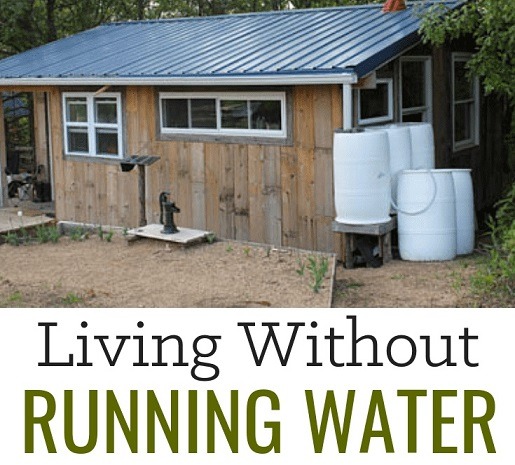
Off-Grid: Living Without Running Water
The other day, a friend of mine and I were discussing my emergency planning activities and supplies. When it came to plumbing, my friend said “I couldn’t live without running water”. To that I responded, “If you think you can’t, you haven’t tried or you haven’t looked at alternatives”. I then began to explain the methods I have used in place of conventional plumbing. It all boils down to this; if you seek alternatives, you will find them but you may need to give up some of the creature comforts like taking long showers and automatic dish washers. Reaching for the faucet and expecting water to flow out of it is so ingrained in us that, for many, it seems impossible to imagine a life without that luxury. It is possible. A mindset change is always needed when dealing with an emergency or making a lifestyle change to "go against the norm". Try it. Plan one day to live without turning on the faucet, taking a shower/bath, using the dishwasher or flushing the toilet [as usual]. The items below are but a few of the alternatives available. You are limited only by your imagination and research. As a homesteader, Jaimie gets questions about water. "It seems that everyone marvels at my fortitude of living so long without running water. They want to know how I do it. I often find myself answering their questions by explaining the logistics of life without working faucets. I tell them how we heat water on our wood stove in the winter and in our solar oven in the summer. I explain how we have a bucket shower on a rope and pulley attached to the ceiling above our bathtub. But what I've come to realize is that their questions aren't even remotely related to logistics. What they really wonder about is my commitment. They are really asking HOW could I find it in myself to spend three years carrying water?!" Read more . . . This Is What it Looks Like to Live Without Running Water in America Tips for Surviving Without Running Water How to Survive a Week Without Running Water WATER SOURCES: Produce Drinking Water from the Air, Ground and Undrinkable Water Long-Term Water Storage: Containers - Treatments - Quantity Per Person Hand-Made Water Well and Hand Pump DRINK: If you don't have a water storage plan and public water is not available or contaminated, there are several ways to "create" clean drinking (potable) water from nearly any kind of water or ground moisture. Distilling is the best method and can be done for free or very little cost. Click here for other options. SINK: My cabin’s "rustic" version of a sink is a small stainless steel sink built into the kitchen counter with a 5-gallon water container on a shelf above the sink, to dispense into the sink, and a 5-gallon bucket under the sink, to catch the used water. But, again, there are many alternatives, including RV sink systems and those used by snowball stands and lunch wagons. SHOWER: There are many portable showering solutions (usually for camping) that do not require conventional plumbing. Some produce heated water and others do not. For those that don’t produce their own heat, pre-heated water can be used. For years, I have enjoyed using coleman hot water on demand. It uses the 16.4-oz. propane cylinders or optional bulk propane tank adapter. With practice, I have been able to acquire a warm, cleaning shower with less than 3 gallons of water and even less when the water is cold. A clean, fresh-water stream or lake is also an alternative. A Shower Bag or [clean] Lawn Sprayer are good for camping or as alternatives when running water is not available. Like anything else, there are choices of quality, capacity and options. Suggested Reading: Bathe Without Showering OFF-GRID HOT WATER: Rocket Stove Hot Water Heater Coiling Copper Pipe for Thermo-Siphoning [Video 1 of 2] Endless Hot Water Without Electricity or Gas [Video 2 of 2] Portable Off-Grid Hot Water Products on Amazon.com TOILET: My most recent off-the-grid toilet is a compost toilet. It requires no electric or water. An electric, incinerating toilet does require a good amount of electric but requires no water or plumbing. The unit vents its "odor" outside and all that’s left are ashes. I have used both types for years and have found them to be extremely efficient and comforting that I can stay in a nice warm cabin instead of going to an outhouse. I found them to be the closest thing to a "regular" residential toilet, without the need for plumbing. There are many other, less expensive alternatives that can be utilized but are a bit less maintenance-free, uncomfortable and can be more expensive over time. I have also used a simple bucket with a heavy-duty trash bag liner, a toilet seat, made especially for 5-6 gallon buckets, with kitty litter and a product called "Poo Powder" to help control odor and solidify the waste. Your selection will depend on your circumstances, availability and budget. LAUNDRY: Doing Laundry in an Emergency Situation or Living Off-The-Grid GRAY WATER: Water should never be wasted. A graywater system is used to take water that has already been used from places like laundry, shower and sink and divert it to use for another purpose like watering gardens or landscaping instead of flushing it down into the sewer or running it into a field. Using a Solar Still, graywater can be converted to drinking water. Here are some resources for installing and using a graywater system. Depending on where it is to be installed, a government permit may be required. [Article 1] [Article 2] [Video 1] [Video 1] POWER WASHING: With a 12-volt water pump (from a marine supply store) connected to my 12-volt batteries (to push the water to my Power Washer), and the pump placed between my water-collection barrel and my Power Washer (connected to my generator), I can power wash my ATV, cabin deck and anything else that needs an extra-powerful stream of water. A [clean] Lawn Sprayer may work as a less powerful alternative. SEE ALSO: Replenishable Water and Food Sources Toilet Paper Alternatives [Author's Reference Link]
[11-Cs Basic Emergency Kit] [14-Point Emergency Preps Checklist] [Immediate Steps to Take When Disaster Strikes] [Learn to be More Self-Sufficient] [The Ultimate Preparation] [P4T Main Menu]
This blog is partially funded by Affiliate Program Links and Private Donations. Thank you for your support.
#water#running water#water pressure#living without water#no plumbing no problem#prepare4tomorrow#prepper#prepping#survival#shtf#diy#bushcraft#off-grid#survivalism#survivalist#prepared#homestead
2 notes
·
View notes
Text
Solar water heater 100 ltr price in Bangalore
Solar water heater 100 ltr price in Bangalore
Solar water heater 100 ltr price in Bangalore, You should know about solar power first before going for any solar thermal system. Solar thermal system is based on the principle of converting sunlight into hot water (or steam) for use in heating homes and buildings. Solar water heating systems, commonly called solar hot water systems, convert the sun's rays into energy using a black-body absorber located inside a glass collector. When the temperature drops below, however, the efficiency decreases rapidly. Most solar thermal collectors have a maximum working temperature . To install a Solar water heater 100 ltr price in Bangalore, contact Jupiter Solar , www.jupitersolars.in .
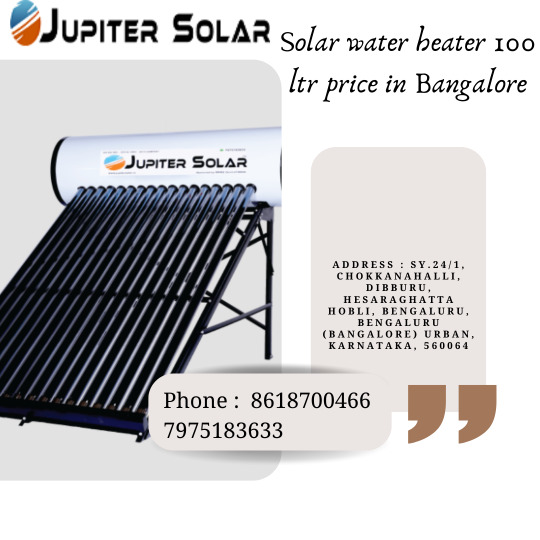
What Is A Solar Water Heater?
What Is A Solar Water Heater?,a solar water heater is a device that converts solar energy into useful heat. These devices utilize the power of the sun to create a warm liquid that can then be applied to our homes and businesses. In effect, a solar water heater is similar to a conventional electric water heater; however, instead of electricity, sunlight does the work. Our bodies need water to survive and if we do not drink enough water, we become dehydrated. If we live in a desert area where there may not be much access to fresh drinking water, having access to heated water would be helpful. Thus, a solar water heater could be a cost effective and environmentally friendly alternative.Buy solar water heater , contact Jupiter Solar , www.jupitersolars.in .
How Does Solar Power Work?
Solar powered water heaters make use of the sun's heat and convert it directly into usable hot water. There are several different types of solar water heaters depending on the desired output. The two basic designs are a direct (concentrating type) and indirect (reflecting type). Direct solar water heaters focus the sun's rays onto copper tubes , while indirect solar water heaters reflect the sunlight back towards the tubes. Both of these types of units produce hot water at high efficiencies, although the concentrating type has higher operating costs.
https://jupitersolars.in/faq.php
Cost And Efficiency Of Solar Water Heaters
To calculate how much you might save with a solar water heater, you'll need to determine the size and capacity of your current system along with an estimate of the total annual usage. Next, you'll need to figure out how much electricity you currently spend on your utility bill. Then simply divide those figures together. Your savings are determined by dividing the difference between your estimated monthly expenses and what you'd pay by the amount of energy your solar water heater produces. Let's assume you're saving $40 per month on your utility bills - that equals $480 annually. To calculate the approximate number of gallons of hot water produced by your existing system, multiply the volume of your tank by the average flow rate. Once again, let's say you have 5 gallons of storage capacity and your current flow rate is 10 gallons per day. That means you're producing 500 gallons of hot water each year. Divide that by 12 months to find your monthly consumption. Now subtract both the $240 annual savings and the $500 annual production from the $960 total cost of your present system. What's left over is how much money you stand to save by switching to a solar water heater.
Size And Capacity
You'll want to consider the size and capacity of the solar water heater you plan to install before making a decision. Many manufacturers offer models ranging from 100 litre to 200 solar water heaters. The larger the system, the greater the potential savings. Smaller systems can be installed outside while larger ones may requires a free standing structure . A good rule of thumb is to buy the largest solar heater unit possible. Keep in mind that the size of your home or business building will affect the size and weight of your solar water heater. Obviously, larger homes and buildings require bigger and heavier units.
Installation
Most solar water heaters are preassembled and ready to go once you've purchased them. However, they do require some installation work. After placing the solar heater unit in its final location, you'll need to add the hardware. Finally, fill the reservoir with water. Depending on where you live, the process may take a few hours before you start receiving hot water.
Maintenance
Solar water heaters don't require very high maintenance once they've been installed. You won't need to worry about replacing the elements until the solar water heating units are working or cleaning the panels since their performance will remain unchanged. However, you may want to clean the surface of the black-body absorbers every so often. Fortunately, they are easy to remove and replace. Also, remember to keep your unit clear of debris such as snow and leaves.
Water Heater
Water heating systems are used to warm water for bathing, cooking, washing purposes, etc. A solar water heater uses solar power to heat the water directly without using any fuel. In some cases, they use a storage tank where hot water is stored until required. These tanks are filled once a day and then heated by the sun. Heating water by boiling is considered efficient since many percentage of the energy goes . Solar water heaters, however, convert this thermal energy into electricity . Energy efficiency is thus increased. Other types of water heaters are gas-based, electric ones.
Storage Tank
The storage tank is the place where hot water is kept. When the temperature drops below a certain level, the pump sends water back to the boiler. Another type of storage tank is the closed loop system where water circulates continuously between the boiler and the tank.
Boiler
A boiler is a device that takes water at room temperature and heats it to high temperatures. Once the water reaches these high temperatures, it is sent to a tank where the excess heat is removed and converted to useful energy. Depending on the size of the boiler, it may need to have a fan inside to remove extra heat. The fan can either run constantly or only while the water is being pumped.
Pumping System
Pumping systems move water from one point to another. There are many different pumps, but some of the most common ones include centrifugal, screw, and piston pumps.
Electric Motor
Electric motors are the devices that turn the mechanical energy of steam or electrical energy into kinetic energy. An electric motor uses electric current to create rotating force. The rotor spins within the stator, converting it to rotary motion. The electric motor converts electrical energy into rotational energy which is then transferred to the shaft turning the impeller blades.
Impeller Blades
Impellers are the blades that are attached to the shaft. To improve efficiency, the blades spin faster by increasing RPM (revolutions per minute). The higher RPM increases the pressure of the water pushing it outward forcing it to flow around the outside of the impeller blades. This helps the water leave the impeller blades in a continuous stream and exit the unit.
Air Pump
Air pumps help move air across surfaces, keeping them clean and preventing mold and bacteria buildup. Air pumps are often used in air conditioning units to move cool air over coils and condensers.
#Air Pump#Impeller Blades#Electric Motor#Pumping System#Boiler#Boiler system#boil#hot water#Storage Tank#Water Heater#Maintenance#Installation#Installation of solar water heater#Bangalore#manufacturer#solar energy#solar heaters#Size And Capacity#Cost And Efficiency Of Solar Water Heaters#How Does Solar Power Work?#How Does Solar Power#What Is A Solar Water Heater?#Solar water heater 100 ltr price in Bangalore#Solar water heater 100 ltr price#100 litre solar water heater
2 notes
·
View notes
Text
Reliable Plumbing Services in Melbourne for Every Need
For both home and business owners in Melbourne, reliable plumbing is essential for comfort, safety, and functionality. Whether it’s a leaky tap, blocked drain, or major repair, having a trusted plumbing service can prevent minor issues from becoming expensive problems. With a wide range of services available, Melbourne residents can rest assured knowing there are qualified professionals to handle every plumbing need.
Comprehensive Plumbing Services for Homes and Businesses
Professional plumbers in Melbourne offer a complete range of services to address every aspect of plumbing. Here’s an overview of the most common services that home and business owners can rely on:

General Repairs and Maintenance
Routine maintenance and timely repairs are the keys to extending the life of plumbing systems and avoiding emergencies. Melbourne’s plumbing professionals provide quick repairs for leaking faucets, running toilets, and faulty pipes. Regular maintenance checks are also offered, helping detect issues early, saving costs in the long run, and ensuring optimal water flow.
Blocked Drains and Sewers
Blocked drains are a common issue, particularly in older buildings and high-use areas. Plumbing services in Melbourne use advanced techniques, such as hydrojetting and CCTV drain inspections, to identify and resolve blockages. These techniques are non-invasive, ensuring minimal disruption to the property while effectively removing clogs, tree roots, and other obstructions.
Emergency Plumbing Solutions
Plumbing emergencies can occur anytime and require immediate attention. From burst pipes and flooding to gas leaks, emergency plumbing services provide 24/7 availability to tackle urgent issues promptly. Quick response times help minimise water damage, maintain safety, and restore essential services. Emergency plumbers are equipped with the latest tools and technology to handle these critical situations swiftly.
Hot Water System Installation and Repair
A reliable hot water system is essential in Melbourne, where chilly winters demand a steady supply of hot water. Plumbing services offer installation, repairs, and replacements for all types of water heaters, including gas, electric, and solar-powered units. Professionals assess household or commercial water needs to recommend the best system, ensuring energy efficiency and reliable hot water access.
Gas Plumbing Services
Gas plumbing is a specialised service that ensures the safe installation, repair, and maintenance of gas appliances and fittings. Certified plumbers handle gas leak detection, appliance installation, and regular inspections to maintain safety and efficiency. By relying on experts, Melbourne property owners ensure compliance with safety regulations and prevent potential hazards.
Water Filtration and Conservation Solutions
With a growing focus on environmental responsibility, plumbing services in Melbourne also provide water filtration systems and eco-friendly solutions. These systems enhance water quality for drinking and household use, while water-saving fixtures help conserve resources and reduce utility bills. Water filtration installations include tap filters, under-sink systems, and whole-house filtration units for improved water quality and a more sustainable approach.
How to Choose the Right Plumbing Service in Melbourne
Finding the right plumbing service provider is crucial. Here are a few tips to ensure you’re getting the best service:
Look for Licences and Certifications: Ensure the plumbing service provider is licenced and certified, indicating they meet Melbourne’s professional standards.
Check for Reviews and Recommendations: Customer reviews and word-of-mouth recommendations can give valuable insights into the quality of service.
Evaluate pricing and transparency. Transparent pricing is essential. Ask for quotes upfront to avoid hidden fees and unexpected costs.
Emergency Services: Choose a provider that offers emergency services if you require urgent assistance.
Benefits of Choosing Reliable Plumbing Services in Melbourne
Hiring reputable plumbers provides several benefits, including:
Peace of Mind: Qualified professionals handle your plumbing needs with expertise and experience.
Long-Term Savings: Preventative maintenance and timely repairs reduce the risk of costly damage.
Safety and Compliance: Certified plumbers adhere to Melbourne’s safety codes, minimising the risk of gas leaks, water contamination, and structural damage.
Conclusion
In Melbourne, reliable plumbing services are crucial for maintaining a safe and functional environment in both homes and businesses. From general repairs and maintenance to emergency responses and water conservation solutions, local plumbing professionals provide a comprehensive range of services. By choosing experienced, certified plumbers, Melbourne residents can ensure their plumbing systems are efficient, compliant, and built to last.
Source From : Reliable Plumbing Services in Melbourne for Every Need
0 notes
Text
Tips for Finding Affordable Water Heater Suppliers in UAE
Finding affordable water heater suppliers in the UAE requires a strategic approach. Start by comparing prices from multiple local suppliers to identify competitive rates. Look for seasonal discounts, promotions, or bulk purchase deals that many suppliers offer. Prioritize suppliers who have a strong reputation for quality and customer service, as a low price shouldn’t mean compromising on reliability. Consider opting for energy-efficient models, as they may have a higher upfront cost but provide long-term savings on utility bills. Check online reviews and ratings to gauge the experiences of previous customers, and don't hesitate to ask for quotes or negotiate for a better price. Local showrooms can also offer insights into affordable options without compromising on quality.
Understanding the Importance of Reliable Water Heater Suppliers in UAE
In the UAE, where water heating is essential for both residential and commercial properties, choosing reliable water heater suppliers is crucial. A dependable supplier ensures consistent access to high-quality products, suitable for the UAE's climate and energy standards. Knowing what to look for in a supplier can make all the difference in ensuring long-lasting and efficient water heating solutions.
Types of Water Heaters Offered by Suppliers in UAE
Water heater suppliers in UAE provide a wide range of options to meet diverse needs. From traditional tank water heaters to modern tankless and solar water heating systems, the variety allows customers to find the best fit for their requirements. Understanding the differences between these types helps buyers make informed decisions.
Key Features to Look for When Choosing a Water Heater Supplier in UAE
When selecting a water heater supplier in the UAE, it’s essential to consider several key features. Look for suppliers that offer energy-efficient models, durable materials, and strong warranties. Suppliers with a variety of products, good customer reviews, and an established reputation in the market are often the most reliable.
Benefits of Partnering with Local Water Heater Suppliers in UAE
Partnering with local water heater suppliers in UAE has many advantages. Local suppliers often have a better understanding of regional needs, ensuring their products are suitable for the local climate. They can also provide faster customer service, reduce shipping costs, and support the local economy, making them a smart choice for consumers.
How Water Heater Suppliers in UAE Ensure Product Quality and Safety?
Reputable water heater suppliers in UAE prioritize product quality and safety. They adhere to strict local and international standards, ensuring that their products are efficient and safe for home or business use. Quality control measures, including testing and certification, are key to delivering reliable and durable water heaters.
Comparing Prices and Services from Top Water Heater Suppliers in UAE
Comparing prices and services is essential when choosing a water heater supplier in UAE. Some suppliers offer competitive prices but may lack in after-sales support, while others might provide comprehensive warranties and customer service. Evaluating both costs and additional services can help you find the best value for your investment.
Finding Eco-Friendly Water Heater Suppliers in UAE
As sustainability becomes a priority, many water heater suppliers in UAE now offer eco-friendly options. These suppliers provide energy-efficient models and solar water heaters designed to reduce energy consumption and minimize environmental impact. Choosing an eco-conscious supplier can lead to long-term savings and a smaller carbon footprint.
Conclusion
Selecting the right water heater supplier in UAE is vital for securing a reliable, energy-efficient, and durable product that meets your specific needs. By focusing on product variety, supplier reputation, local knowledge, and eco-friendly options, you can find a supplier that aligns with your priorities. Whether you’re looking for a traditional water heater or a cutting-edge solar model, partnering with a reputable supplier ensures peace of mind, long-term savings, and high-quality heating solutions. Investing time in finding the best water heater supplier will pay off with improved performance, lower energy costs, and a more comfortable living or working environment.
0 notes
Text
What Are the Different Types of Water Heaters Available

When it comes to ensuring a consistent supply of hot water in your home, understanding the different types of water heaters available can help you make an informed decision. At Water Heater SOS, we specialize in providing high-quality water heaters tailored to meet your needs. Below, we explore the various types of water heaters, highlighting their features, benefits, and ideal applications.
1. Tank Water Heaters
Tank water heaters are the most common type found in residential homes. They consist of a large tank that stores a specific amount of hot water, typically ranging from 20 to 80 gallons. These heaters are available in both electric and gas models.
Pros:
Relatively low initial cost.
Simple installation and maintenance.
Provides a large supply of hot water at once.
Cons:
Limited supply; once the tank is depleted, you’ll have to wait for it to refill.
Higher energy costs due to standby heat loss.
2. Tankless Water Heaters
Also known as on-demand water heaters, tankless models heat water directly as it passes through the unit, eliminating the need for a storage tank. This type of heater provides hot water only when needed.
Pros:
Energy-efficient; no standby heat loss.
Unlimited hot water supply.
Compact design saves space.
Cons:
Higher upfront cost compared to tank water heaters.
May require upgrades to your home’s electrical or gas systems.
3. Heat Pump Water Heaters
Heat pump water heaters utilize electricity to move heat from one place to another instead of generating heat directly. They extract heat from the air or ground and use it to heat water, making them highly efficient.
Pros:
Highly energy-efficient; can reduce energy bills significantly.
Environmentally friendly as they use renewable energy sources.
Cons:
Higher initial investment.
Performance can decrease in colder climates.
4. Solar Water Heaters
Solar water heaters harness solar energy to heat water. They consist of solar collectors and a storage tank, making them a sustainable choice for environmentally-conscious homeowners.
Pros:
Reduces utility bills significantly over time.
Eco-friendly option with low environmental impact.
Cons:
Initial installation cost can be high.
Efficiency depends on climate and sunlight availability.
5. Condensing Water Heaters
Condensing water heaters are similar to tank water heaters but are designed to use the heat from exhaust gases to heat water. This type is particularly effective in gas-powered systems.
Pros:
Highly efficient and can save on energy costs.
Good for larger households with high hot water demand.
Cons:
More complex installation process.
Higher upfront costs.
Conclusion
Choosing the right water heater for your home depends on your hot water needs, budget, and energy efficiency preferences. At Water Heater SOS, we offer a range of water heaters, from traditional tank models to modern tankless systems, ensuring you find the perfect solution for your hot water requirements. For expert advice and high-quality installations, contact us today!

Author : Stuart McHenry
Who We Are
Water Heaters SOS, a family-owned enterprise water heater repair company based in Redlands, California, extends its specialized services throughout the Inland Empire. They are dedicated to delivering a superior customer experience, ensuring that every step of our service process, from initial contact to completion, is executed with utmost professionalism and care, surpassing client expectations.
Their expertise encompasses the repair and installation of both conventional tank water heaters and advanced tankless systems, alongside providing effective water filtration solutions. Water Heaters SOS aims to make every service interaction seamless and hassle-free for their customers.
Contact Us
Water Heater SOS
328 Sonora St., Redlands, California, 92373, USA
(800) 697-4014
https://www.waterheatersos.com
Find Us On Social Media
Instagram
To Know More
Brand Map
1 note
·
View note